|
Yes, if you're wondering, a vaccine card holder is a 'thing'. Now that more and more people are getting vaccinated, things are definitely looking a lot better. Restrictions are being lifted everywhere, meaning we will be returning to some sort of 'normal' in the near future. This depends strongly on as many people as possible receiving a vaccination. And this in return means lots of vaccine cards and vaccine card holders. The vaccine card might be an important item on our future trip/holiday packing list. While it's currently not clear how and if we will need our vaccine cards, one thing is for sure: you will want to keep it safe and clean, and why not do that in style? The international vaccine card isn't really a card. The little booklet was most probably, by the looks of it, not designed to be carried around. The CDC vaccine card is only made out of paper as well. So I decided vaccine cards, whether CDC cards or international vaccine cards need a pretty cover. After I made my free passport holder pattern, a sweet customer suggested to use the same pattern for the vaccine card and of course I had to add a little foundation paper pieced design. And here are actually two. The vaccine and syringe pattern, and the band aid pattern. Of course these patterns would be equally cute on a pouch, for example a pouch for your travel medical supplies. Or how about a fabric box for your medical supplies at home? A pillowcase or a cover for a coolpad and much, much more, I am sure you will come up with many more ideas, let me know in the comments. This vaccine card holder pattern is essentially the same as for the passport holder pattern and the international vaccine card is the same size as a passport. Materials needed: ( for both vaccine cards, international vaccine card and CDC vaccine card) outer piece: - 4"x 4" foundation pieced quilt block, vaccine and syringe or band aid outer piece: - 1 piece of fabric 4.5"x 4.5" (same as the background fabric of the quilt block ) - 2 strips of fabric 1 1/4" x 8.5" (same as the background fabric of the quilt block ) - 8 1/4" x 5 7/8" for the lining - 2 x 4" x 5 7/8" for the pockets - For a CDC vaccine card you only need one pocket piece of fabric, and one piece of clear vinyl 3 1/2"x 5 7/8" plus a strip of fabric for the binding 1 1/4"x 6". - 8 1/4" x 5 7/8" very thin but stiff fusible interfacing (I used Vlieseseline S320) In case your vaccine card is a different size, this overview shows you how to determine the right size for your outer piece and lining. Instructions: (for the international vaccine card) 1. Sew the quilt block of your choice, either the vaccine with the syringe or the band aid, in the 4"x 4" size. 2. Cut all your fabrics, lining and interfacing. Stitch the fabric pieces for the outer piece together the way its shown here in the assembly photo. Join the two squares first, then add the two strips of fabric at the top and bottom. This will be the outer piece of the vaccine card holder. 3. Iron on fusible interfacing to the wrong side of the outer piece of the vaccine card holder. Cut the outer piece to 8 1/4" x 5 7/8". ( check the size with your own vaccine card as shown above) 4. Fold the pocket fabric pieces in half aligning the longer raw edges and press. Then place these two on the outer piece aligning each with the left and right raw edge. 5. Place the lining piece on top of the outer piece with the two pockets, right sides together, pin or clip in place. Stitch around the outer edge with 1/4" seam allowance leave about a 3" opening at the bottom longer edge for turning your vaccine card holder later. Cut the corners at a 45° angle, that gives you nice crisp edges when turning the vaccine card holder inside out. Close the opening with a small seam allowance. Instructions for the vinyl version: (for the CDC vaccine card) Follow steps 1.-3. as above. 4. Fold the pocket fabric piece in half aligning the longer raw edge and press. 5. Stitch the binding to the piece of vinyl. 6.Place the pocket piece of fabric onto the left of the lining piece and the vinyl to the right aligning the raw edges to the left and to the right, as show in the photo below. 7. Place the outer piece on top of the lining piece, right sides together. Clip or pin in place and stitch around the outer edge with a 1/4" seam allowance leaving a 3" opening for turning the vaccine card holder later. 8. Cut the edges in a 45° angle ( this gives you nice crisp edges) . Turn inside out and close the opening with a small seam allowance. Here is a short sewing video for the vaccine card holder for you. Tadaaaa and Yippie all done .... What do you think? Super cute and easy, right? What other projects would you be making with the syringe and band aid pattern? Let me know in the comments. Happy sewing Ingrid xx
0 Comments
Are you all as hopeful as I am, that traveling season will start soon again? This was something I really missed in the last 15 months. I bet all of you as well? More and more people are getting vaccinated and this means for all of us, that we're slowly getting back to normal. I am sooo looking forward to this. After 15 months of lockdown, more or less strict and 15 months of homeschooling two teenage daughters, you know that I really miss getting away :-) Therefore I decided our passports need some dressing up and I made this cute little passport holder pattern. The Airplane pattern is a super quick and easy foundation paper piecing pattern and suits this passport wallet perfectly, don't you think. I used the 4"x 4" size for the outer piece of the passport cover. I decided on a new sewing project to enhance our passports... this fabric passport holder looks just so much cuter going through passport control, don't you agree? So let's get to sewing this cute passport holder/ passport cover with the cutest paper pieced airplane quilt block. Materials needed: ( this is the size for a European Passport ) Most passports are very similar in size, (as you maybe know, we have a few nationalities in our family) the European passport is about 1/8" to 1/4" wider than the others. To double check the right size for your passport cover, fold the passport open add 1/8" all the way around the passport and then add 1/4" seam allowance, that will be the size of your lining and outer piece. outer piece: - 1 airplane quilt block size 4"x 4" - 1 piece of fabric 4.5"x 4.5" (same as the background fabric of the airplane block ) - 2 strips of fabric 1 1/4" x 8.5" (same as the background fabric of the airplane block ) - 8 1/4" x 5 7/8" for the lining - 2 x 4" x 5 7/8" for the pockets - 8 1/4" x 5 7/8" very thin fusible batting (optional but this gives a bit more stand I used Vlieseline H180) Instructions: 1. Sew your airplane quilt block in 4"x 4" size. Cut all your fabrics, lining and batting pieces. Stitch the fabric pieces for the outer piece together the way its shown here in the assembly photo. Join the two squares first, then add the two strips of fabric at the top and bottom. 2. Iron on fusible batting to the wrong side of the outer piece of the passport holder. Cut the outer piece to 8 1/4" x 5 7/8". ( check the size with your own passport as shown above) Fold the pocket pieces in half aligning the longer raw edges and press. Then place these two on the outer piece aligning the left and right raw edges. 3. Place the lining piece on top of the outer piece with the two pockets, right sides together, pin or clip in place. 4. Stitch around the outer edge with 1/4" seam allowance leave a 3" opening at the bottom longer edge for turning your passport holder or passport wallet later. Cut the corners at a 45° angle, that gives you nice crisp corners when turning the passport holder inside out. Close the opening with a small seam allowance. And YAY you're all done . Happy and save travels everyone.... I'm off to stitch a few more in other colors. Ingrid x PS: let me know what colors you are making , can't wait to see your photos on social media. Doesn't this happen to you all the time as well? You have tons of the cutest fabric scraps left over? But of course you don't want to throw them out? I like quick and easy projects with these fabrics, so I don't end up collecting tons and tons of fabric pieces, which I do anyways, haha. So here is another super pretty and easy pattern... this time for quilted oven mitts. Materials needed: ( for one oven mitt) size aprox. 7" wide x 11" high. - 48 pieces of 2" fabric squares ( thank you Riley Blake Designs for this adorable fabric series 'spooky hollow' by Polkadotchair ) - 1 piece of fabric for the back 9.5"x 12.5" - 2 pieces of fusible batting ( or insul brite if you wanted to ) 9.5"x 12.5" - 2 pieces of lining fabric 9.5"x 12.5" - 1 strip of fabric 2"x 5" for the hanging tab. - 1 piece of bias cut binding strip 1.5" wide 17" long. - printed oven mitt template Instructions: 1. Cut all your fabric pieces. Cut 48 2" fabric squares. And cut out the oven mitt template which you will find here. 2. Sew all the squares together. The easiest way, will be chain piecing the squares. Here's a quick video on how to do this. 3. Once you have all the squares sewn together, attach them to the fusible batting or insul brite. 4. Place the patchwork top on top the lining piece of fabric, wrong sides together. And quilt to your liking. I did quilt this with diagonal squares. 5. Iron the back piece of fabric on to the fusible batting and place on top of the lining piece wrong sides together. Then quilt to your liking. I quilted diagonal squares here as well. I drew them onto the fabric with a fabric marker ( Koh-I-Noor Fabric pen, that can easily be dusted off after sewing). 6. Sewing the hanging tab: Fold the piece of fabric for the hanging tab in half, aligning the long edges. Sew along the long edge with 1/4" seam allowance and turn inside out. 7. Place the oven mitt template on the patchwork piece and draw around it with a 3/8" seam allowance. Turn the template around ( so the wrong side is now facing you) and place it on the back piece and draw around the template again with a 3/8" seam allowance. Cut out the oven mitt shape with zigzag shears, then draw the oven mitt shape on the lining side ( again I used the fabric pen, that can easily be dusted off) 8. Place front and back pieces wrong sides together . Place the hanging tab between the two layers at the bottom corner facing the inside of the oven mitt. Sew along the drawn line, securing the hanging tab in the seam, then cut back the seam allowance to 1/4 ". 9. Cut the seam allowance, between the hand and thumb part of the oven mitt, all the way to the seam. This makes sure you don't get weird pleats when turning the oven mitt inside out. 9. Turn oven mitt inside out and clip the binding strip to the outside and stitch with 1/4" seam allowance. 10. Fold over the binding to the inside and hand stitch in place. And here we go you're all done. So get your pots out and ... happy cooking. What do you think? These adorable oven mitts are a great gift for any one, don't you agree? Ingrid xx Halloween comes early this year, because Riley Blake Designs just released this super adorable fabric series called 'spooky hollow' designed by Melissa Mortenson of The Polka Dot Chair. I decided to sew up all of my Halloween quilt blocks with this cute fabric series and I am over the moon with the results. The fabric patterns are small enough to work great as background fabrics, but are equally fun for fussy cutting. These quilt blocks will be perfect for these little trick-or-treat bags, it's a free pattern and tutorial. But let's see what all these Halloween symbols mean: The witch: Halloween as we know it today, was celebrated by Celtic cultures as a feast for 'summer's end' and to honor the fall harvest. It was called Samhain, pronounced sow-in. It was celebrated on the evening of October 31. until sunrise on November 1. and is also known as the pagan New Year's Eve. It was a celebration for the deceased as much as for the beginning of the pagan New Year. Celebrations included bonfires and feasts. In the Middle Ages people who celebrated with bonfires were accused of being witches. And their power was believed to be greatest during Halloween night. So it's no surprise, that the witch, her hat or broomstick are still to this day, one of the most prominent symbols for Halloween. The bat: The original Celtic bonfires at Samhian would attract many bugs and flying insects. Which then caused bats to emerge at these festivals to have a little feast of their own. Therefore there's no Halloween without a bat. Halloween black cat: The association of black cats with Halloween also comes form the Middle Ages. The women accused of witchcraft often fed wild cats or had pet cats themselves. Black cats were feared especially, since their dark black fur allowed them to roam through the dark undetected, leaving only their piercing eyes to be seen. And who doesn't agree, this is a little bit scary, right? The ghost: Ghosts have always been a symbol for Halloween. Samhain and the Christian holiday 'All Hallow's Eve' or 'All Saints Day' are both celebrations for the deceased. During the night of Samhain it was believed, that the veil between the living and the dead is the thinnest and people are closest to the dead and their spirits. Making the ghost the most fitting symbol for this 'ghosty' holiday. The Jack-o-lantern: The Celts would carve turnips on 'All Hallow's Eve' and would place and ember inside. This was done to keep evil spirits away. Funny enough pumpkins didn't exist in Ireland at that time that why turnips were used. The Pumpkin only became popular when the Irish migrated to America and were more popular and easier to carve that turnips. So what do you think? Are you in the mood to start Halloween sewing early this year ? Thank you so much to Riley Blake Designs for supplying the absolutely adorable Spooky Hollow fabric series designed by Melissa Mortenson that I used for these cute quilt blocks. Ingrid xx How to sew the cutest coasters in less than 15 minutes... We all have tons of fabric scraps left over from our sewing projects right? That's why I love quick little projects to use all these cuties. Here is one, that you will love and actually use as well. Materials needed: ( for one coaster) finished size: 5" circle - 9 x 2" squares - fusible batting 5"x 5" - 1 piece of fabric for the back 5"x 5" - binding strip ( bias cut, that's important! ) 18"x 1.5" - If you want to make these coasters water proof, iron on some vinyl ( heat n bond) before or after you quilt them ( note: the ones here are without vinyl). Before you start: Read the instructions carefully Seam allowance is always 1⁄4” unless mentioned otherwise. Instructions: 1. Cut out all your fabrics and batting as mentioned above. 2. Sew your 9 squares together. Here is a quick video on how to piece these squares successfully. 3. Iron on the fusible batting and place on back piece of fabric wrong sides together. Then quilt the square to your liking. If you want to make these coasters water proof, iron on some vinyl ( Heat 'n Bond) before you quilt them . 4. Draw a circle on your quilted square and cut it out 5. Fold over the beginning of your binding strip 1/4" and then clip, pin ore clue your binding strip in place, along the outer edge of your circle. Stitch along the outer edge with 1/4" seam allowance. 6. Fold over your binding to the back and fold it under 3/8" as shown in photo 1, photo 2 shows the coaster from the front. 7. Now stitch binding in place from the front. Or hand stitch from the back, which ever way you prefer. It's super easy with the machine.... I feel good :-) Here we go, all done... What do you think? Easy and cute, right? Happy coaster sewing..... Ingrid xx This adorable little lunch bag set or picnic set consists of three vinyl lined snack bags and a small patchwork tablecloth. This is a fun set for this upcoming summer picnic season. We might not be able to go to restaurants any time soon, but we will be able to go for picnics. This is the perfect excuse to sew something cute for ourselves, don't you think? Each little snack bag or lunch bag has a cute and most importantly easy to sew heart in the front. I added a simple running stitch row to the heart for extra cuteness. But you could also embroider the lunch bag owners name or a sweet message, in case you want to gift these cuties. How about a subtle 'I love you' ? I used iron on vinyl for the lining of these snack bags. It's super practical and easy to use. You can use any kind of quilting cotton fabric and just iron on the vinyl. The one I used here is from Heat n Bond. This way you can wipe the inside easily. And just in case something spills, your outside bag and everything else is protected. There are three sizes in this picnic/ lunch bag set. Enough options for all sorts of snacks, fruits and sandwiches. And to complete this adorable little set and to use up the scraps you have left over from sewing the bags, I added a small table cloth to the pattern. The size is 21"x 21" and perfect for a short picnic at the motorway service station when on a road trip, or when hiking, to enhance your mountain view even more. Are you ready for a picnic? Let me know what you think about this easy to sew little set in the comments. Ingrid xx
Mindfulness featuring Buddha and the eight auspicious symbols of Buddhism,
is a new quilt pattern I designed these past few months. I hope it helps and inspires you. And maybe helps you navigate easier through these special times.
Buddha and the eight auspicious symbols of Buddhism...
The eight auspicious symbols of Buddhism can be traced back to ancient India where Buddhism originated. Some of these eight symbols are also associated with ancient royal rituals in India such as coronations of kings. Today, the eight auspicious symbols of Buddhism are closely related to Buddha or Dharma. Dharma is an important Hindu or Buddhist concept, referring to a law that governs the universe. Although there is no single-word English translation, a close adaption is 'right way of living'. These symbols represent the offerings that were made to Buddha by the gods when he achieved enlightenment. Why are these eight Buddhist symbols called 'auspicious'? Auspicious means, giving or being a sign of future success. And that's exactly what these symbols represent, they are symbols that are helpful for success and prosperity. These eight symbols are often seen in many holy altars in front of a Buddha statue or mural. They also serve as focal points of meditation and contemplation, so if you want a better future or if you want to grow deeper in your spirituality, it might help to make these symbols your focus. Here are the eight auspicious symbols of Buddhism and their meanings: 1. The Lotus Flower
Thelotus flower symbolizes the complete purification of the body, mind and speech.
Since the lotus flower is an aquatic plant with its roots in deep mud, but a blossom that rises above the muck and opens to the sun, beautiful and fragrant, it's no surprise that the lotus represents the clarity of enlightenment. 2. The Conch Shell
The conch shell has long been used as a battle horn in Asia. In ancient India the conch also represented the Brahmin caste.
In Buddhism the conch shell represents the sound of Dharma, reaching far and wide to awaken the human beings from their slumber of ignorance. Dharma, which derives from a Sanskrit root word meaning 'to uphold or sustain'. The concept behind Dharma is anything that produces or keeps a positive order. The conch shell symbolizes the need to accomplish one own and others wellbeing. 3. The Precious Parasol
Theprecious parasol is a symbol of royal dignity and protection of the sun.
In Buddhism the precious parasol represents the wholesome protection from illness and suffering in general. 4. The Treasure Vase
The treasure vase is filled with precious sacred things, but no matter how much is taken out, it's always full.
It symbolizes a long life and prosperity. 5. The Eternal Knot
The eternal or endless knot represents Buddha's endless wisdom and eternal harmony.
It's a symbol for the endless cycle of suffering, birth and rebirth. As well as the inter-twining of wisdom and compassion. 6.The Victory Banner
The victory banner symbolizes the victory over obstacles and negativities and the fear of death.
More generally it represents the victory of wisdom over ignorance . There is a legend, that Buddha raised the victory banner over Mount Meru to mark his victory over all phenomenal things. 7. The Dharma Wheel
The dharma wheel is one of the most well known symbols of Buddhism.
The wheel has eight spokes, representing the Eightfold path. The Dharma wheel, according to tradition, was first turned when Buddha delivered his first sermon after his enlightenment. It symbolizes the turning of Buddha's teachings, which enables humans to experience joy and liberation. 8. The Golden Fish
The golden fish were originally the symbol for the rivers Ganges and Yamuna.
They came to represent over time the good fortune in most Asian religions. In Buddhism the golden fish symbolize happiness as they have complete freedom of movement in the water.
And here is the whole Mindfulness quilt with all the eight symbols surrounding Buddha.
What do you think? One can't go wrong with all the auspiciousness right? It does present favorable circumstances and is showing signs of a favorable outcome, isn't it? Thank you so much to Riley Blake Designs for supplying the absolutely adorable Stardust fabric series designed by Beverly McCullough that I used for this amazing project. Also a huge thank you to Iva Steiner @schnigschnagquiltsandmore for quilting this beautiful quilt. For more info on her services check out her Instagram.
Now lets explore MINDFULNESS a bit more.
Mindfulness is the human ability to be totally present and aware of where we are and what we're doing. It is the ability to not be overly reactive or overwhelmed by what's going on around us. We all own mindfulness, we just have to learn how to access it. This past year has shown us, that our lives can be turned upside down easily from one day to another and there's little to nothing we can do about it. And while we probably looked on the outside before, for comfort and fun, it's now more important than ever, to learn to be just content with what we have, and concentrate on our insides. Tweet this: Meditation can significantly reduce stress Thats where mindfulness finds it's perfect place. Our minds go all over the place and we loose touch with our body and surroundings and sooner than we think we're stuck with obsessive thoughts about things that happened or we're anxious about the future. Studies say that 8 out of 10 Americans ( or Europeans) experience stress in their daily lives and therefore have a hard time calming their minds and bodies. This puts them at a high risk of numerous diseases among them being heart disease and stroke. Mindful meditation, even for just 10 minutes per day, can make a huge difference.
This is why I added this Yoga Pillowcase pattern to my Buddha quilt pattern series.
It's an easy sewing pattern for a standard round Yoga pillow. Three facts about Mindfulness: 1. Anyone can do it You don't have to change your beliefs or anything like that. Everyone can benefit and it's easy to learn. 2. It's a proven practice You don't have to take mindfulness on faith. Both experience and science have proven its positive benefits on our health, work and over all wellbeeing. 3. Mindfulness is not exotic It's what we already do and what we already are. We just have to learn to come back to it more and more. Here are 6 helpful, mindful attitudes: - non-judging, - acceptance, - patience, - trust, - letting-go, - gratitude A great way to come back to our mindful attitudes and get unstuck is meditation. What do you think? Something you would want to explore? Or is it already something you practice regularly? Let me know ... Ingrid xMaterials needed: (all measurements are width x height) For the pillowcase top: > 1 FPP Block of lotus flower in 8”x 8” size (unfinished 8.5”x 8.5”) > 2 2 strips of fabric 3” x 8.5” > 3 2 strips of fabric 3”x 13” > 4 one piece of fusible interfacing 13” x13” For the side panel: > 1 2 strips of fabric 32.5” x 3” > 2 2 pieces of fusible interfacing 32.5” x 3” > 3 1 strip of fabric 7” x 5.5” > 4 1 strip of fusible interfacing 7”x 5.5” > 5 1 endless zipper + slider 32.5 ” length > 6 2 pieces of fabric (for the handle) 2.5” x 6” > 7 1 piece of fusible interfacing 2.5” x 6” For the bottom: > 1 one piece of fabric for bottom of pillow 13” x 13” > 2 one piece fusible interfacing 13” x 13” Before you start: Read the instructions carefully Seam allowance is always 1⁄4” unless mentioned otherwise. Instructions: 1. Cut out all your fabrics as mentioned above. 2. Sew your lotus flower quilt block, it will measure 8.5” x 8.5” 3. Attach the side strips to your quilt block 4. Draw a 13” diameter circle (or a 6.5” radius) 5. Cut out a 13” diameter circle 6. Iron on fusible interfacing and quilt to your liking 7. Attach the fusible interfacing to the side strips of fabric ( 2x 32.5”x 3” and 1x 7”x 5.5”) Sew the endless zipper to the long sides of the two 32.5” x 3” strips of fabric. And top stich along the zipper. 8. Stitch the 7”x 5.5” fabric to one end of the zipper part. Top stitch along the seam as well. 8. Lay the two pieces of fabric for the handle right sides together and attach fusible interfacing to one side. Stich along the long edge with a ¼” seam allowance. Then turn inside out and top stich along the long edge again with a small seamallowance. 9. Attach the handle to the side panel and cut to width of panel. 10. Now clip the side panel to the top circle till the side panel ends meet. This is where you stick your side seam, this way the side panel fits exactly to your yoga pillow top. Once the top piece is stitched in, repeat for the bottom circle. 11. Open up your zipper and turn your pillowcase inside out. Tadaaaa your yoga pillowcase is all done.... Now take your time for some mindful meditation and enjoy :-) Thank you so much to Riley Blake Designs for supplying the absolutely adorable Stardust fabric series designed by Beverly McCullough that I used for this amazing project. Ingrid xPs Oh, when I saw this new fabric line from Riley Blake Design called Ahoi Mermaids! by Melissa Mortenson, I just new I had to design a matching pattern. This mermaid pattern comes in three different quilt block sizes and it will be perfect for too many quilting projects. I think I need to make a mini quilt for my youngest daughter. And just because these Mermaids are so cute and pretty, here are some Mermaid facts or stories: 1. The earliest mention of a Mermaid legend comes from Syria. The woman's name was Atargatis. Apparently she was beautiful and powerful and fell in love with a shepherd boy. After she had his baby girl Semiranis the boy died and Atargatis became depressed and very , very sad. So she decided to throw herself in the ocean. But because of her beauty, the gods saved her and changed her into a Mermaid, with only her lower body being transformed into a fishtail. 2. The name Mermaid literally means 'woman of the sea' The old English word Mer means sea and maid means woman... There we go Mermaid, ahh woman of the sea :-) 3. The aquamarine is said to be made out of a mermaids tears 4. Seacows or Manatees were often mistaken for Mermaids. Many lonely and maybe drunken sailor saw these huge mammals and thought they were Mermaids. Christopher Columbus was said to have seen ' ugly and fat Mermaids'. I mean can you blame Christopher Columbus or the sailors? Months at a time at sea... but then again apparently only 5% of the ocean has been explored, so who knows for sure. 5. A Mermaids kiss gives you gills. According to an old folks tale, if you kiss a Mermaid you can breathe under water. 6. The color of a Mermaids tail depicts her mood. You be the judge, because whatever color a Mermaids tail is, is a clear sign of her mood. And of course it totally reflects her personality... well if was a Mermaid what color tail would I have ? Thank you so much to Riley Blake Designs for supplying the absolutely adorable Ahoi Mermaids! fabric series designed by Melissa Mortenson that I used for these adorable Mermaid quilt blocks. So what color tail will your Mermaid have? Happy swimming... ahh sewing Ingrid xThe story of my Chinese New Year quilt. Our youngest daughter was born in Taiwan. So we get to celebrate Chinese New Year as well as our regular New Year. Chinese New year is also called Spring Festival, as it falls at the end of the still very cold and wintry days, but marks the end of those days and welcomes spring, with all its new beginnings and fresh starts. You can also call it the Lunar New Year since its date is set according to the Lunar calendar. The Lunar calendar is still very important in China and South East Asia and all traditional holidays are still celebrated and many people calculate their birthdays according to the Lunar calendar as well. The idea for this quilt was born in January of 2020. I have to admit I always loved paper lanterns, they feel light, breezy and fun and always give a vibe of happiness, don't you think? So I started my Chinese New Year series with all sorts of different paper lanterns. There are 4 types of paper lanterns in this pattern. The longer skinny lantern as you can see in the photo above. A paper lantern that's shaped as a double trapeze. The prettiest lantern of them all, called the palace lantern. And of course the most popular paper lantern, the balloon lantern. A quilt just with lanterns was the first idea, but it needed something more dramatic, so I designed the dragon. The dragon is a symbol of power, strength and good luck in East Asian culture. They supposedly control water, rain, typhoons and anything that has to do with water. Dragons are everywhere all over East Asia - in legends, festivals, astrology, art, names and idioms. Dragons are definitely seen as LUCKY and good, quite different from the evil, dangerous fire breathing dragons of most Western stories. So here is my good luck dragon. Just a dragon and lanterns didn't feel right and complete, so I added another very important Asian sign, the Yin Yang koi fish symbol. It represents duality and harmony in life. In Feng Shui the Koi is tied to the Yin Yang symbol and it is said to represent two Koi, one female and one male and shows that all things in life are connected. How did I decide on the fabric and colors? First of all, I have always been a huge fan of Art Gallery Fabrics, because they are the nicest finest cotton fabric. And when it comes to detailed foundation paper piecing patterns a high quality cotton fabric is very helpful. A light weight cotton just makes your life so much easier when piecing small segments with many seams. It was an absolute joy to work with Art Gallery Fabrics for this quilt pattern. The fabric series 'Matchmade' by Pat Bravo was a real match made in heaven. And second of all my color choices depended heavily on traditional Chinese colors in general and for Chinese New Years in particular. Red is Chinas favorite color which represents luck, joy and happiness as well as it wards off anything evil. Yellow is an imperial color and represents power, royalty and prosperity. So how perfect was the 'Matchmade' series for this quilt project? I had to add a little more pink, since anything without a good splash of pink is just not me :-) Therefore I mixed in some Art Gallery Pure Solids to add some more of my favorite hues. I couldn't be happier with the fabric choices for this Chinese New Year quilt, I think it's the perfect combo. Don't you agree? It took me about two weeks to finish this quilt top. The paper lanterns are fairly quick and easy to sew, they took me about two hours each. The dragon was a great project for a Sunday afternoon. And while this quilt top looks really fabulous as it is, I knew I wanted something really special for it as far a quilting goes. I am usually very content with simpler straight line quilting, but I thought this quilt asked for more. So I called up Iva Steiner @schnigschnagquiltsandmore , and asked her if she would have the time to quilt this beauty. And yes thank goodness she did. So I drove down to Luzern/ Switzerland and brought her my quilt top. It 's about a five hour drive from Frankfurt, but I loved the nice change during our Covid lockdown. And all I can say, Iva did a fantastic job, her quilting is absolutely stunning and the icing on the cake of my Chinese New Year quilt, don't you agree? Thank you so much to Art Gallery Fabrics for supplying the fantastic 'Match-Made' fabric series designed by Pat Bravo that made this stunning quilt possible. And a special thank you to Iva Steiner for her stunning quilting in this Chinese New Year quilt. So who is ready for a Sew Along ? Let me know :-) Happy Lunar New Year.... Ingrid x |
Author
Ingrid Alteneder Archive
March 2022
Categories
All
|
-
Shop
- New patterns
- All Patterns
- Appliqué Patterns
- Animals
- Baby
- Ballet
- Bear Cottage
- Beach/ Boats/ Nautical
- Buddha/ Mindfulness
- Chinese New Year
- Christmas
- Easter and Spring
- Fairytale
- Fall/ Autumn
- Flowers, Trees and Plants
- Food/ Drinks
- Halloween
- Oktoberfest
- Quilted items
- Stars
- Viva la Frida/ Dia de los Muertos
- Valentine's Day
- Village Patterns
- Mixed pattern
- Home
- About
- Blog
- Publications
- Etsy
- News
- Deutsch
-
Shop
- New patterns
- All Patterns
- Appliqué Patterns
- Animals
- Baby
- Ballet
- Bear Cottage
- Beach/ Boats/ Nautical
- Buddha/ Mindfulness
- Chinese New Year
- Christmas
- Easter and Spring
- Fairytale
- Fall/ Autumn
- Flowers, Trees and Plants
- Food/ Drinks
- Halloween
- Oktoberfest
- Quilted items
- Stars
- Viva la Frida/ Dia de los Muertos
- Valentine's Day
- Village Patterns
- Mixed pattern
- Home
- About
- Blog
- Publications
- Etsy
- News
- Deutsch
|
Visit us at
|






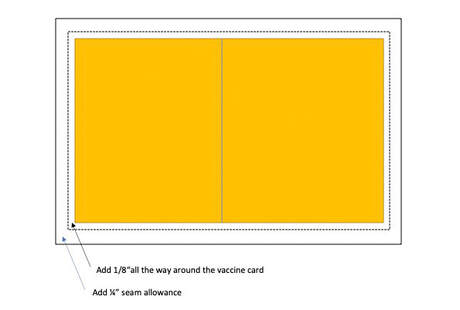














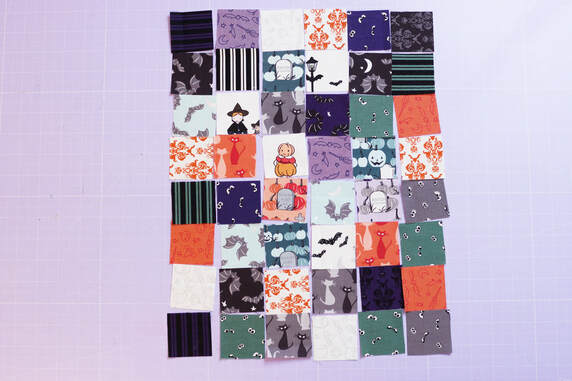
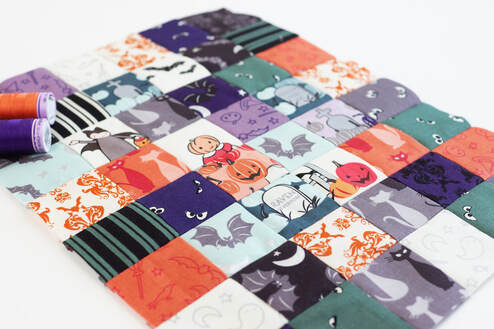

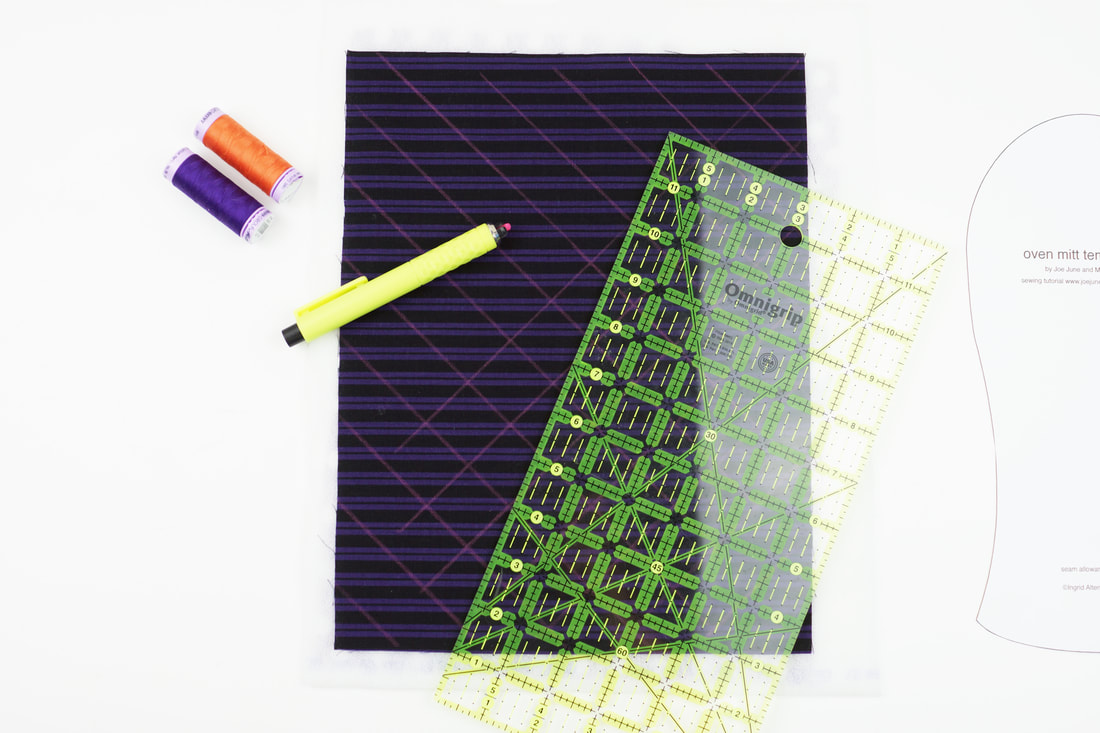





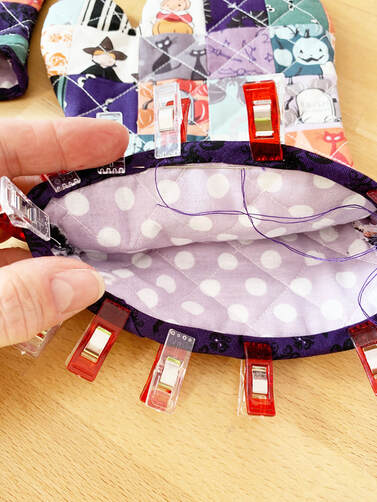



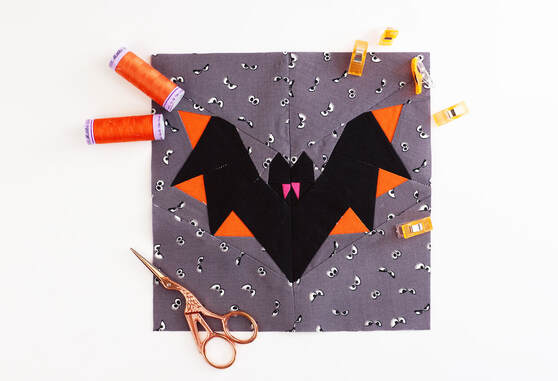















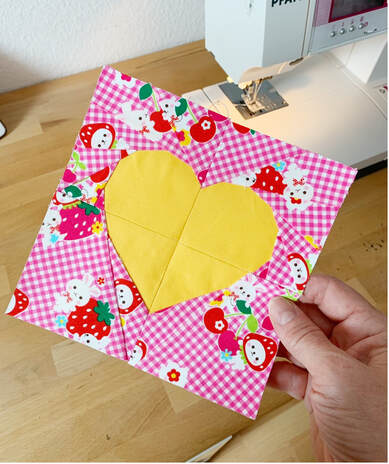
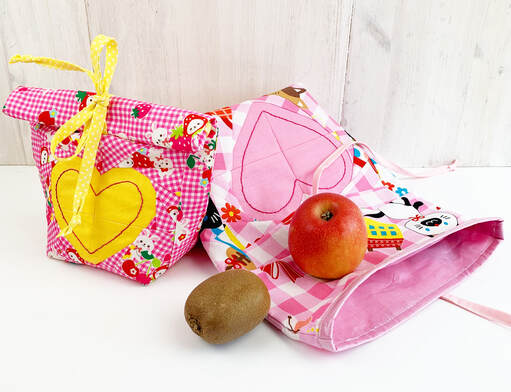





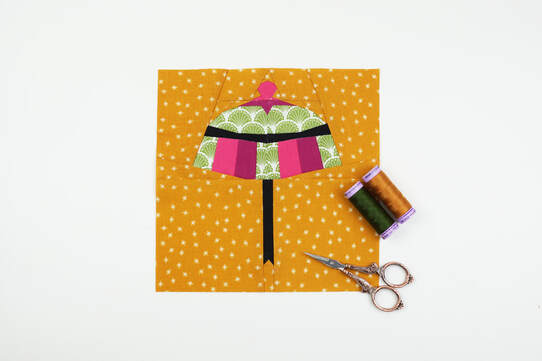

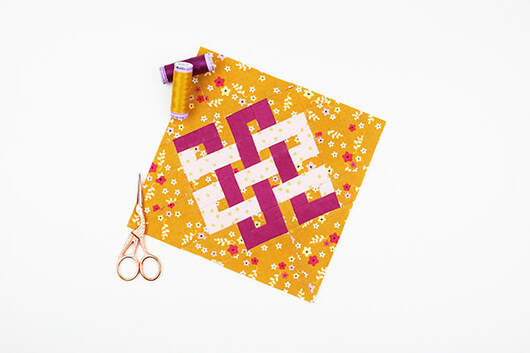


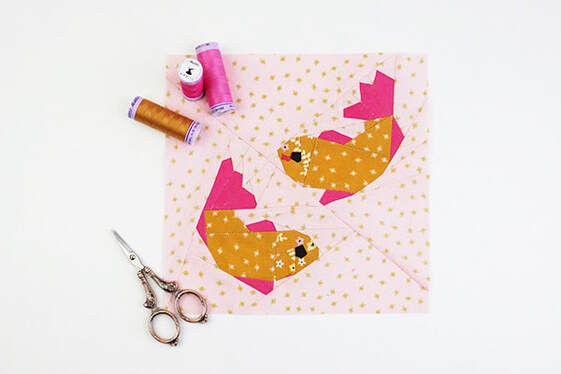

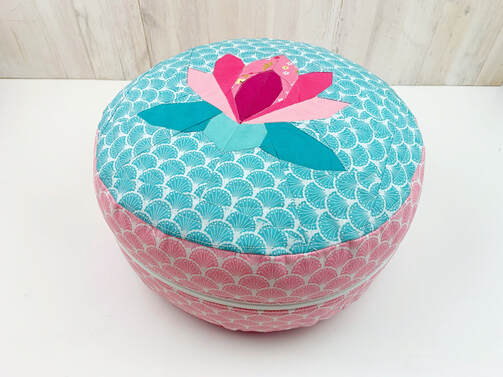














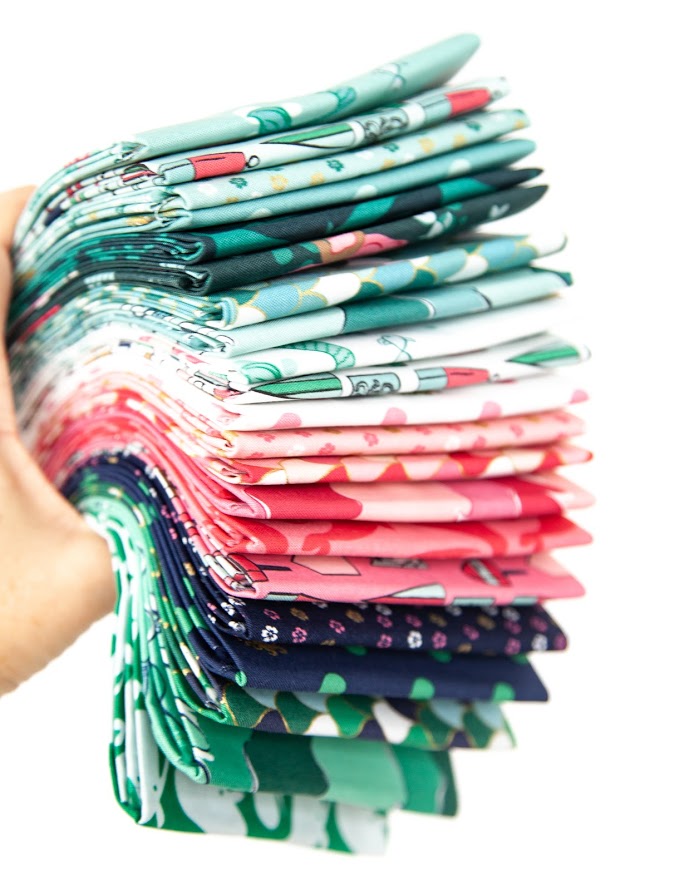
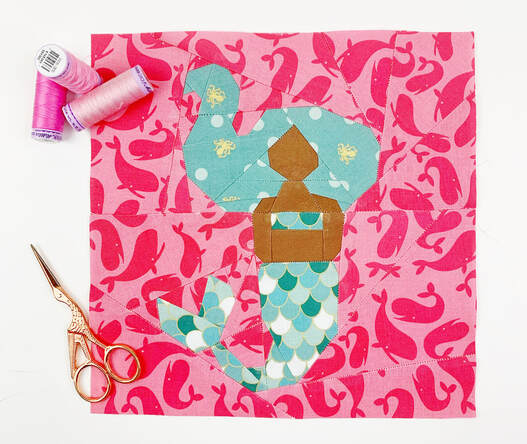
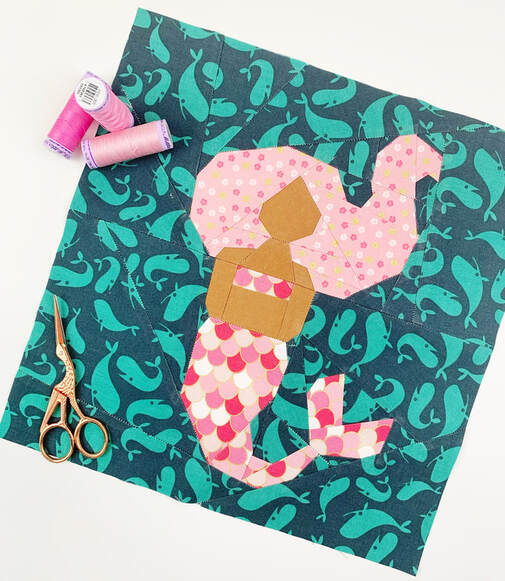

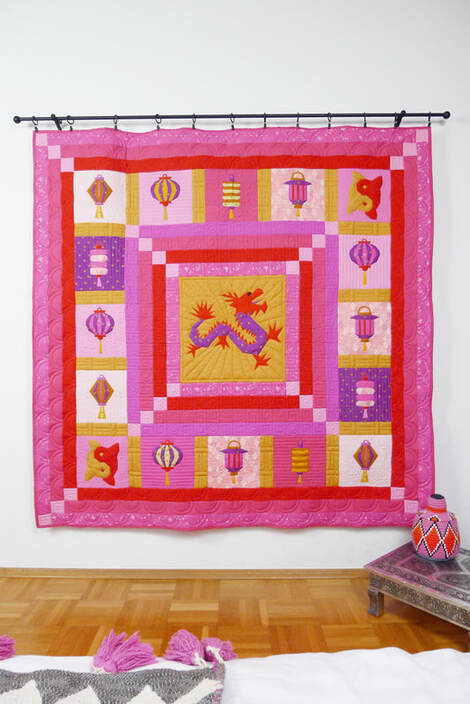

















 RSS Feed
RSS Feed
